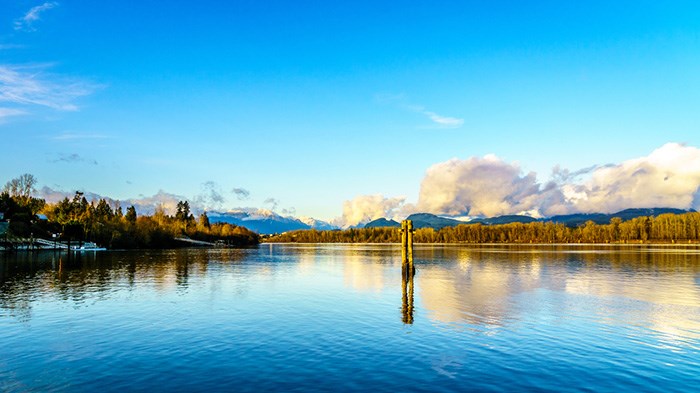Accounts of the cargoes carried in and out of the local port are an interesting part of the history of life on the Fraser River and of the day-to-day activities of that life.
These cargoes were part of a recent presentation on the first decades of this city’s existence. The details of a particular set of cargoes and their delivery vessels certainly caught the attention of the audience and caused one person in attendance to say “did I hear you correctly?”
We will soon tell you what caused that reaction but first a few other examples. In early Fort Langley, one vessel delivered salt, nails, gunpowder, molasses, kettles, tobacco, rum, guns, shot, a mill wheel and oxen, and then took away salmon packed in barrels, shingles, beaver skins and other miscellaneous furs.
The first vessel to sail from New Westminster with B.C. goods for a foreign port, in this case San Francisco, was the D L Clinch that left port with 60,000 feet of cabinet wood and 50 barrels of cranberries.
The well-known clipper ship, the Thermopylae, sailing near the end of her productive life, loaded lumber at a Sapperton mill and the barque Alfred Hawley, another large ship of sail, sailed for Australia with 300,000 feet of rough and finished lumber.
For the more local markets, there were many boats that brought goods on the river to this city. They came from Richmond, Delta and other locations up river such as farms along the Pitt River. A well-known small sail boat came quite often from Mud Bay with vegetables.
One particularly interesting newspaper item about the vessel Gypsy not only gave cargo examples but also told the reader who the commodities were going to. These included “For McDonough, a large consignment of bran and bacon; Cunningham, flour, plaster, and lime; Kyle and Tilton, candy, figs, 120 half barrels of sugar, 80 tubs butter, lard, and 200 sacks flour; Trapp Bros, hardware shovels, and plough gear; and for several other persons small consignments of general merchandise.” That certainly gives us a clear idea of the variety of cargo types that might arrive in a simple shipment.
The item that caused such a reaction from some folks came from a list of arrivals and departures of vessels to the river and New Westminster. There were the typical steamboats such as the Flying Dutchman, Hope, Yale, Caledonia, and the Otter. There were some small ships of sail such as the sloop Sherman and the schooner H C Page. But along with these were six canoes from various locations.
Canoes carried cargo loads all over the area and were not just local transport. The canoe Greyhound came from Victoria with general cargo; Stansbury was from Point Roberts with potatoes; Mary was from Vancouver Island with venison; and an unnamed canoe was from Victoria with leather. Two others, Alida and Seabird were going to Victoria but the cargo was unnamed.



